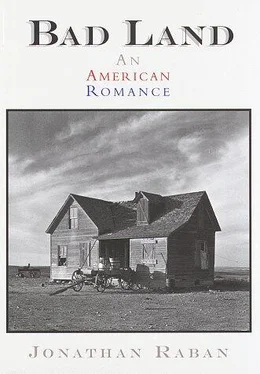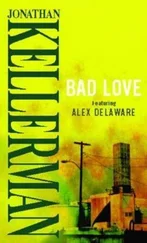He’d gone west to get a college degree, but the degree faded from view. Living in his tent, he was able to bank most of his wages against the day when he and Myrtle would be married — though being a smoke chaser was hardly the occupation of a family man. In the bitter fall of 1926, after being caught out on a mountainside in a three-day blizzard, he became a maintenance man on the Montana Power dam. For someone who had been brought up on a failing homestead, and who had seen how easy it was to fall through the net, into destitution, it looked like a good job. It promised tenure, a ladder to climb, company housing and “benefits.” By the time that Ned and Dora arrived in Thompson Falls, Percy had found a safe if lowly niche in corporate America.
Ned and Dora took a room in the Black Bear Hotel on Main. Land-hungry, Ned scouted around town for an affordable chunk of Thompson Falls. On April 25, 1927, he paid Orrie K. Goodwin a total of $550 for eight lots on the block bounded by Clay and Church Streets and by Third and Fourth Avenues. The whole parcel amounted to a little less than two-thirds of an acre.
Ned’s small new world was on the wooded slope north of Main Street, and it had a clear view over the town and the river; ten minutes’ walk from the hotel and the stores, but high enough to stand proud of the pall of acrid steam from the mills.
The house he built for himself and Dora was still there, snugged-in among the add-ons of later owners — and I saw immediately the plan that he had in mind. The front of the house looked south, over the Clark Fork, as the homestead had looked south over the swale. Instead of the shale bluffs of Ismay, there was the great, inky wall of forest, where Percy had done his smoke chasing. At the back, as at Ismay, a stone path led from the kitchen, north to the henhouse and the vegetable garden, which Ned’s grandson could remember as the equal of Mr. MacGregor’s in the Beatrix Potter illustrations. The new house was the old house, transplanted to a Rocky Mountain Eden.
The Wollastons were among the first of the ex-homesteaders from Prairie and Custer Counties to settle here. But it was soon common to see on Main Street faces familiar from Terry, Mildred, Ismay. Word got back to the prairie that it was hard to starve in Thompson Falls.
In the little junk-store museum, once the jail, I met Gerald Bybee, who had come to the town in the 1930s, fleeing the family homestead in western Montana, where life with his alcoholic father had become intolerable.
“There were salmon in the river then. Game in the woods. There were the wild strawberries, blackberries, huckleberries and all those other berries … You could live pretty much off the land.”
“And jobs?”
“Oh, sure. There were jobs. If you could use a saw … There were jobs in the mills. Then, if you knew something about horses, you could get a job as a mule wrangler. There were still a lot more mules than people in Thompson Falls, and even for people with no experience of logging, there were all those jobs in the timber industry that anyone who’d grown up on a homestead could do.”
There was little money in any of this. Bybee described the Thompson Falls of the late thirties as “a scummy little town,” where, in 1939, he had been able to buy six tax-defaulted lots, inside the city limits, for “as much as $1.50 apiece — and I thought that was too much.”
It was the ease with which one could be self-sufficient that brought people here. Ned and Dora were able to support themselves largely out of their back garden, with fish from the river and a haunch of venison hanging in the shed. Ned hired himself out as a carpenter in the Forest Service, supervising the repair of bridges that were washed away in the spring floods, and a few months of casual work were ample to keep the household in funds through the year. Within a short time of his arrival in Thompson Falls, Ned was a Justice of the Peace and a city worthy.
He and Dora were buried a step away from their property on Clay and Third, in the Masonic cemetery. They lay side by side under plain, flat stones.
DORA M. WOLLASTON EDWARD LUARD WOLLASTON 1864 1936 APR. 23, 1872. MAR 2, 1951
Most of the homesteaders went on farther west, and I didn’t want to lose sight of their continuing trail. Ditching the Wollastons on their arrival at the place where they died was a wrench; but the house on the hillside seemed as safe a berth as one could hope for for the young Minnesotan with a compass-rose tattoo on the back of his hand.
I was hungry. Nearly forty miles on from Thompson Falls, there was a sign for Noxon — a name I thought I recognized from Wheels Across Montana’s Prairie as another of the homesteaders’ destinations. The town was on the far bank of the river; shrouded by winter trees, on an apron of green water meadows, it looked a pretty place, and I crossed the bridge over the Clark Fork in search of a late lunch. In close-up, Noxon was less attractive than it should have been — a rambling string of bungalows and trailers, with a general store, a gun shop and the Landmark Café.
I opened the café door on an amiable buzz of talk between the owner of the place and three men seated round a table inside. The talk stopped dead at my entry. I hoisted myself onto a stool at the bar, and asked for coffee and a hamburger with salad. The owner took my order, but declined to make eye contact with me.
The four men of Noxon closely resembled each other. All had black spade beards. All were shaving forty. The three at the table were dressed in hunters’ camo caps, plaid flannel shirts, suspenders (in which they each lodged both thumbs), work pants and big black lace-up boots.
I made a similar inventory of my own clothes. I had dressed to face the early-breakfast crowd of reps in the Missoula Red Lion: an olive green shirt, gray herringbone-tweed jacket from Brooks Brothers, corduroy slacks from Eddie Bauer and a pair of blue leather deck shoes. In the Landmark Café, Noxon, I might as well have been wearing a ball gown, high heels and a wig.
The silence behind me turned to an inaudible muttering, as conversation resumed in strict sotto voce. My food came. It was good, and I said so, but still the owner refused to catch my eye. I then remembered where I had seen the name Noxon — not in Wheels , but in The New York Times a few months previously. Noxon was the headquarters of the Militia of Montana, which had come to sudden public attention in the aftermath of the Oklahoma City bombing. The Landmark Café was evidently the regimental mess.
When I thanked the owner for a fine lunch, he turned his back on me and busied himself with the coffee machine. To give him and his cafe their full due, the place was more grimly unwelcoming than any restaurant I have eaten in in my life — but the hamburger and salad, and coffee, too, were beyond reproach.
I spent a short while prowling in the Jeep (which must have been at least as offensive as my urban weekender’s getup), along the mountain road at the back of the town. At intervals of half a mile or so, there were mailboxes by the side of muddy tracks leading deep into the trees. It was prime survivalist real estate. As the homesteaders had been drawn to this valley for its easy pickings, so a later generation of surly romantics had found in it the perfect site for their version of life in the woods. With a hunting rifle and a pair of dogs, you could sally forth from your cabin like Natty Bumppo, snacking on chokecherries. When the dogs growled in the dark, you’d go out to the stockade with night-vision binoculars, searching the forest shadows for lurking federal agents.
That version of the West seemed half Boy Scout playacting, half deadly paranoia, with some queer Bible reading thrown into the mixture. Its leading figures — Bo Gritz, the Trochmann brothers, Randy Weaver, Timothy McVeigh — were like bad-blood descendants of the homesteaders. In their resentment of government, their notion of property rights, their harping on self-sufficiency and self-defense, as in their sense of enraged Scriptural entitlement, one could see one perverse legacy of the homesteading experience and its failure on the plains.
Читать дальше












